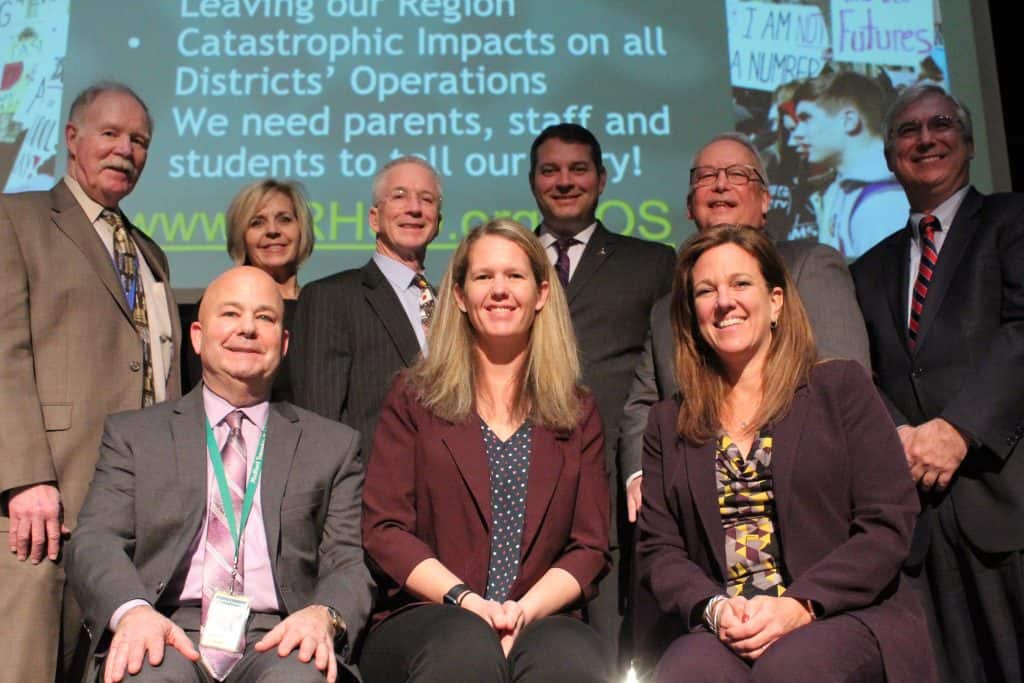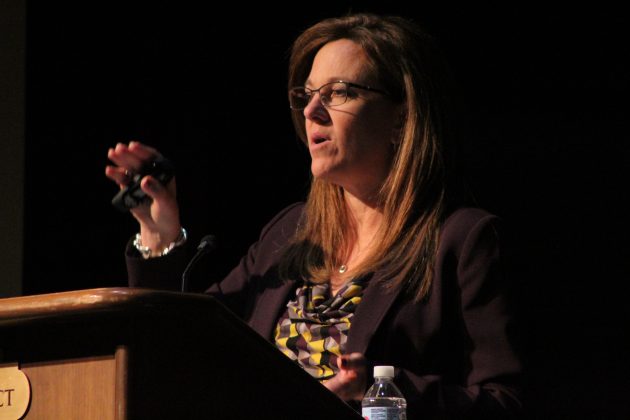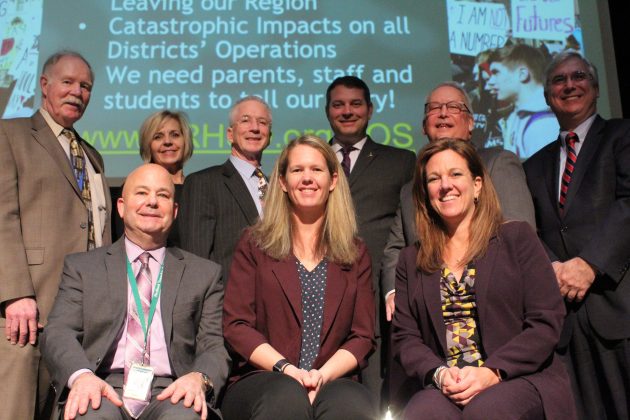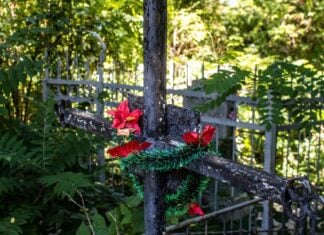
Nine Lenape Region superintendents addressed the public about methods of advocacy and individual financial experiences with the School Funding Reform Act during a forum Feb. 13.
Districts within the region face novel problems with the state’s restructure of district funding, a fact brought to light at the Lenape Region Community Forum, led by Lenape Regional High School District Superintendent Carol Birnbohm.
A petition and summary of the presentation are available at LRHSD.org/SOS
Through the 2024-2025 school year, districts in the region are seeing the following effects: LRHSD expects to lose $8,356,073; Evesham Township, $7,929,362; Medford Township, $1,385,735; Shamong Township, $1,257,931; Southampton, $1,013,042; Tabernacle Township, $2,688,739; and Woodland Township $316,972. The reform act “right-sizes” all 584 school districts in the state by 2025, as required by the S2 Bill.
The total loss is approximately $23 million.
The superintendents of Mt. Laurel and Medford Lakes attended the year’s forum, after their absence last year. Both superintendents and their boards of education joined the Support Our Schools (S.O.S.) advocacy group after failing to see an appropriate amount of equalized funding.
Southampton Township Superintendent Michael Harris stated the Support Our Schools advocacy group aims to extend the timeline of cuts to 15 years, learn calculations on the funding and inform legislators of reform effects. Over 92 school districts (representing about 1.4 million students) are members of the group.
New Jersey Gov. Phil Murphy admitted in an April 2019 funding announcement that the timeline should be stretched to 15 years. The state Department of Education awarded $6.4 billion to districts in 2019, according to its 2019-2020 K-12 State Aid School Districts summary.
Sitting quietly in the forum audience was another advocacy group that seeks fair funding for severely underserved districts, the Fair Funding Action Committee.
“We worked collaboratively with legislators on the passage of the S2 legislation,” said Amy Jablonski, the committee’s director of outreach. “While this group is seeking to slow the timeline for S2 implementation, the districts we come from have waited 10 years for even the hope of equitable funding.
“Our students can’t wait any longer because they’ve already waited a decade, despite years and years of funding.”
The state designated two districts in the region as “chronically underfunded.” Neither district had an enrollment decrease. Mount Laurel is underfunded by $1.2 million; Medford Lakes is underfunded by $1.4 million, as reported by NJDOE.
“We certainly want to be a part of the region’s support and the other districts that are a part of our cohort and still at the same time, try to get our money,” Medford Lakes Superintendent Anthony Dent explained.
“I understand that while we want what is rightfully due to us, we certainly don’t want it to hurt the programs of people that I work with and other kids in our region.”
George Rafferty of Mount Laurel said the funding deficit in his district has put a strain on funding programs and initiatives.
“Mount Laurel isn’t financially more solvent than other districts.,” he added. “If you look at our per pupil expenditure cost, we are below the state average and we’ve been forced to live $1.2 million below our means in our overall district budget due to the state aid freeze that has occurred over the last 10 years.
“We do look forward, we’re happy that we’re not being cut, but we’ve never been made whole.”
Defending the deliberate rectification of chronically underfunded districts, Jablonski said they were to be brought to 58 percent of funding in the first year, then to 100 percent in the 2024-2025 school year. She added that overfunded districts should not continue to see funding for students they no longer have.
Enrollment numbers, finalized state aid amounts and budgets will be presented through the spring.
The rest of the region’s districts joined the 59 others that had already made an Open Public Records Act (OPRA) request to the NJDOE, the education commissioner and the governor to learn what the funding formula entails. The request was submitted last week.
In the region’s 20,843 student population, superintendents have seen pupils step forward with their own forms of advocacy, including but not limited to rallies. Birnbohm added that student advocates can emphasize the funding message better than “bringing our award-winning marching band up and playing a tune.”
“I am grateful for the approximate 600 community members who attended this important night for all nine school districts in our region,” the superintendent said in a statement to The Sun.
“The highlights of the night were the students who came, especially the ones who met with me afterwards to tell me they were inspired to take action … a good community turnout, and students learning civic engagement equals a great night.”











